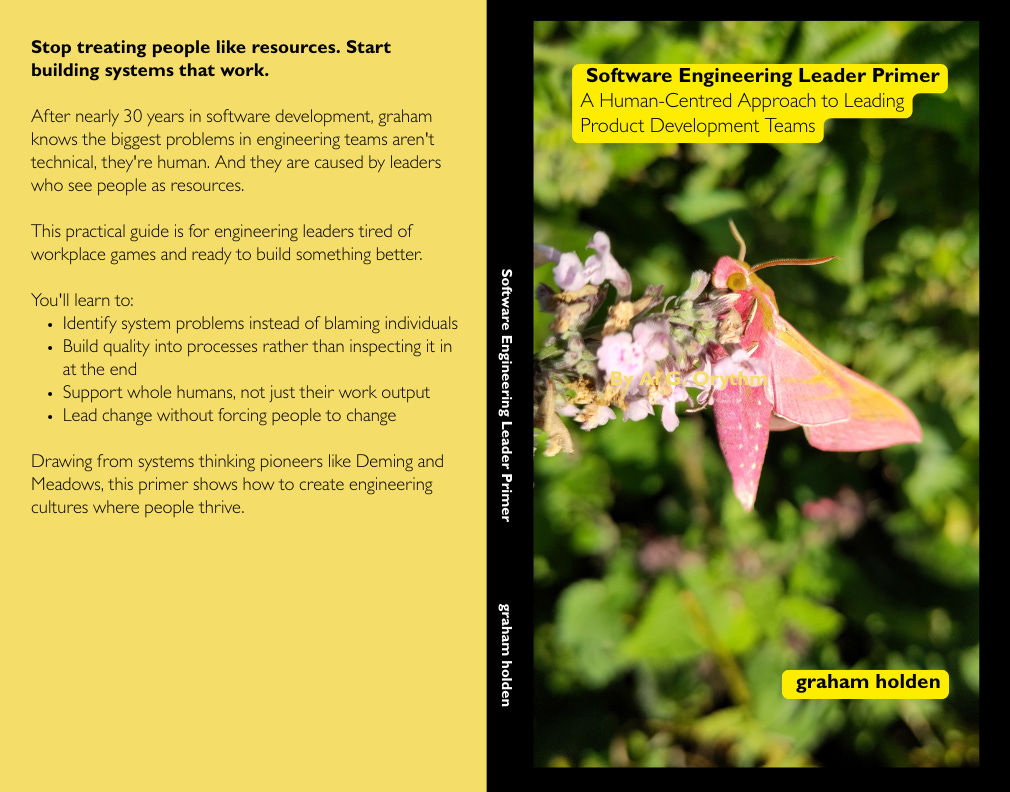Software Engineering Leader Primer
A Human-Centred Approach to Leading Product Development Teams
I’m doing a thing. I’ve decided to combine some of the musings I’ve had on this substack along with my other (managingsystems) - into a 100 page primer. A little book that outlines my current philosophy when it comes to being an Engineering Leader within Software Product Development. This will be released as a paperback and also an ebook, I need to look at best distribution channels for ebook. Watch this space.
Below is the introduction.
The software engineering industry has a leadership problem. We're obsessed with productivity metrics, sprint velocity, and developer efficiency while ignoring the fundamental truth that software development is a deeply human endeavour. We've turned people into resources, collaboration into process, and quality into an afterthought.
This guide exists because the current approach to software engineering leadership is fundamentally broken. It treats symptoms rather than causes, optimises parts instead of systems, and worst of all, reduces humans to interchangeable units of productivity.
After nearly 30 years in software development, from individual contributor to engineering manager, I've learned that the real bottlenecks in software development aren't where we think they are. They're not in coding speed or deployment frequency. They're in communication, vision, and leadership. They're in systems that beat good people every time.
This primer takes a different approach. It's built on the principle that people aren't resources to be optimised but humans deserving of dignity, respect, and the opportunity to do meaningful work. It draws from the wisdom of W. Edwards Deming, Russell Ackoff, Alfie Kohn, Peter Scholtes, Donella Meadows, Margaret Wheatley, and Mary Parker Follett, people who understood that real improvement comes from fixing systems, not blaming individuals.
As a leadership guide there is a focus on systems thinking and human dignity. Instead of productivity hacks and management tricks, you'll find frameworks for creating environments where people can do their best work. Instead of metrics to measure individual performance, you'll learn to identify and address systemic problems.
Use this guide as a reference. Each chapter builds on the previous ones, but they're designed to stand alone when you need specific guidance. Most importantly, remember that leadership isn't about having all the answers. It's about creating systems where the right answers can emerge.


I'm looking forward to reading your "100 page primer" — and I'll be reaching out to you to ask you about your publication process.
Looking forward to the thing!